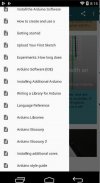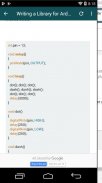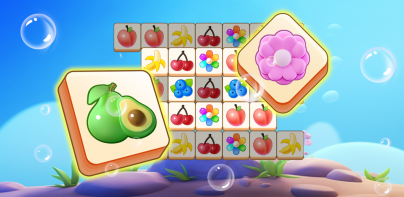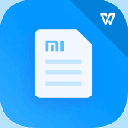










Beginner's Guide to Arduino

Beschreibung von Beginner's Guide to Arduino
What is arduino ?
Arduino is an open-source electronics platform based on easy-to-use hardware and software. Arduino boards are able to read inputs - light on a sensor, a finger on a button, or a Twitter message - and turn it into an output - activating a motor, turning on an LED, publishing something online. You can tell your board what to do by sending a set of instructions to the microcontroller on the board. To do so you use the Arduino programming language (based on Wiring), and the Arduino Software (IDE), based on Processing.
Over the years Arduino has been the brain of thousands of projects, from everyday objects to complex scientific instruments. A worldwide community of makers - students, hobbyists, artists, programmers, and professionals - has gathered around this open-source platform, their contributions have added up to an incredible amount of accessible knowledge that can be of great help to novices and experts alike.
All Arduino boards are completely open-source, empowering users to build them independently and eventually adapt them to their particular needs. The software, too, is open-source, and it is growing through the contributions of users worldwide.
Why Arduino?
Thanks to its simple and accessible user experience, Arduino has been used in thousands of different projects and applications. The Arduino software is easy-to-use for beginners, yet flexible enough for advanced users. It runs on Mac, Windows, and Linux. Teachers and students use it to build low cost scientific instruments, to prove chemistry and physics principles, or to get started with programming and robotics. Designers and architects build interactive prototypes, musicians and artists use it for installations and to experiment with new musical instruments. Makers, of course, use it to build many of the projects exhibited at the Maker Faire, for example. Arduino is a key tool to learn new things. Anyone - children, hobbyists, artists, programmers - can start tinkering just following the step by step instructions of a kit, or sharing ideas online with other members of the Arduino community.
There are many other microcontrollers and microcontroller platforms available for physical computing. Parallax Basic Stamp, Netmedia's BX-24, Phidgets, MIT's Handyboard, and many others offer similar functionality. All of these tools take the messy details of microcontroller programming and wrap it up in an easy-to-use package. Arduino also simplifies the process of working with microcontrollers, but it offers some advantage for teachers, students, and interested amateurs over other systems:
Inexpensive - Arduino boards are relatively inexpensive compared to other microcontroller platforms. The least expensive version of the Arduino module can be assembled by hand, and even the pre-assembled Arduino modules cost less than $50
Cross-platform - The Arduino Software (IDE) runs on Windows, Macintosh OSX, and Linux operating systems. Most microcontroller systems are limited to Windows.
Simple, clear programming environment - The Arduino Software (IDE) is easy-to-use for beginners, yet flexible enough for advanced users to take advantage of as well. For teachers, it's conveniently based on the Processing programming environment, so students learning to program in that environment will be familiar with how the Arduino IDE works.
Open source and extensible software - The Arduino software is published as open source tools, available for extension by experienced programmers. The language can be expanded through C++ libraries, and people wanting to understand the technical details can make the leap from Arduino to the AVR C programming language on which it's based. Similarly, you can add AVR-C code directly into your Arduino programs if you want to.
Open source and extensible hardware -
and more Arduino projects for beginners (DIY AND HOW TO)
Was ist Arduino?
Arduino ist eine Open-Source-Elektronik-Plattform auf Basis von einfach zu bedienende Hard- und Software. Arduino-Boards sind in der Lage Eingänge zu lesen - Licht auf einem Sensor, einen Finger auf einem Knopf oder eine Twitter-Nachricht - und es in einen Ausgang drehen - einen Motor zu aktivieren, auf einer LED drehen, online etwas zu veröffentlichen. Sie können Ihr Board sagen, was durch das Senden einer Reihe von Anweisungen an den Mikrocontroller auf dem Brett zu tun. Um dies zu tun verwenden Sie die Arduino-Programmiersprache (basierend auf Wiring) und die Arduino Software (IDE), basierend auf Verarbeitung.
Im Laufe der Jahre hat Arduino das Gehirn von Tausenden von Projekten gewesen, von Alltagsgegenständen bis hin zu komplexen wissenschaftlichen Instrumenten. Eine weltweite Gemeinschaft von Entscheidungsträgern - Studenten, Bastler, Künstler, Programmierer und Profis - um dieses Open-Source-Plattform gesammelt hat, ihre Beiträge haben eine unglaubliche Menge an zugängliches Wissen aufaddiert, die gleichermaßen eine große Hilfe für Anfänger und Experten sein.
Alle Arduino-Boards sind komplett Open-Source-Anwender befähigen, selbständig zu bauen und sie schließlich auf ihre speziellen Bedürfnisse anzupassen. Die Software ist auch Open-Source, und es wächst durch die Beiträge von Benutzern weltweit.
Warum Arduino?
Dank seiner einfachen und verständlichen Benutzererfahrung, Arduino wurde in Tausenden von verschiedenen Projekten und Anwendungen eingesetzt. Die Arduino Software ist einfach zu bedienen für Anfänger, aber flexibel genug, um für fortgeschrittenen Anwender. Es läuft auf Mac, Windows und Linux. Lehrer und Schüler nutzen es kostengünstig wissenschaftliche Instrumente zu bauen, Chemie und Physik Prinzipien zu beweisen, oder mit der Programmierung und Robotik zu beginnen. Designer und Architekten bauen interaktive Prototypen, Musiker und Künstler nutzen es für Installationen und mit neuen Musikinstrumenten zu experimentieren. Makers, natürlich nutzen sie viele der Projekte auf der Maker Faire ausgestellt zu bauen, zum Beispiel. Arduino ist ein wichtiges Instrument, um neue Dinge zu lernen. Jeder - Kinder, Bastler, Künstler, Programmierer - kann bastelt beginnen gerade nach dem Schritt für Schritt Anleitung eines Kits oder Ideen online mit anderen Mitgliedern der Arduino-Community zu teilen.
Es gibt viele andere Mikrocontroller und Mikrocontroller-Plattformen für Physical Computing. Parallax Basic Stamp, Netmedia der BX-24, Phidgets, MIT-Handy Board und viele andere bieten eine ähnliche Funktionalität. Alle diese Tools nehmen die unordentlichen Details von Mikrocontroller-Programmierung und wickeln Sie es in einem einfach zu bedienenden Paket auf. Arduino vereinfacht auch den Prozess mit Mikrocontrollern arbeiten, aber es bietet einige Vorteile für Lehrer, Studenten und interessierte Laien gegenüber anderen Systemen:
Preiswert - Arduino-Boards sind relativ preiswert im Vergleich zu anderen Mikrocontroller-Plattformen. Die am wenigsten teure Version der Arduino-Modul kann mit der Hand, und auch die vormontierten Module Arduino kosten weniger als 50 $ zusammengebaut wird
Cross-Plattform - Die Arduino Software (IDE) läuft unter Windows, Macintosh OSX und Linux-Betriebssystemen. Die meisten Mikrocontroller-Systeme sind auf Windows beschränkt.
Einfache, klare Programmierumgebung - Die Arduino Software (IDE) ist ein einfach zu bedien für Anfänger, aber flexibel genug, um für fortgeschrittenen Anwender Vorteil als auch zu nehmen. Für die Lehrer ist es auf der Verarbeitung Programmierumgebung bequem basiert, so dass das Lernen Student Programm in dieser Umgebung vertraut sein mit, wie der Arduino IDE funktioniert.
Open Source und erweiterbare Software - Die Arduino Software ist als Open-Source-Tools veröffentlicht, für Erweiterung von erfahrenen Programmierern. Die Sprache kann durch C ++ Bibliotheken erweitert werden, und die Leute wollen, um die technischen Details verstehen, kann den Sprung von Arduino an den AVR C-Programmiersprache machen, auf dem es basiert. Ebenso können Sie AVR-C-Code direkt in Ihr Arduino Programme hinzufügen, wenn Sie möchten.
Open Source und erweiterbare Hardware -
und mehr Arduino Projekte für Anfänger (DIY UND WIE)


























